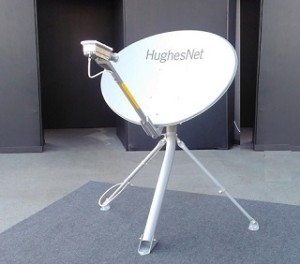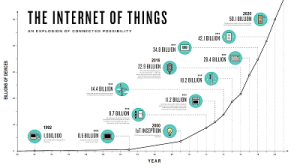
Arquivo para a ‘Computer – Hardware’ Categoria
Pass the box to pay now is fast
Near to fiction until recently, watches with sensors NFC (Near Field Communication) reached the Brazilian market through Bellamy model, with it you approach the product of the clock and the payment is made in seconds.
the Brazilian market through Bellamy model, with it you approach the product of the clock and the payment is made in seconds.
The battery it lasts for years, only different from the traditional cards on the clock there is nothing to show that it is being used for purchases making discreet and secure payment, and the partnership was made with Visa and Brazil Pré-pago.
It has an NFC antenna with a chip “contactless” Visa that communicates with contactless payment terminals, so are expensed credits are previously made by a bank payment function and the company ensures that credit is safe .
Like any technology market the initial change is slow, this type of NFC device already existing in some pieces of clothing and luxury goods should then be present in the simplest grocery product, coexisting with the current bar codes, but with the time the bar code itself may disappear.
New service by satellite is effective
Yes, and already arrived in the Brazil, at an event held on Tuesday morning (28/06) American company Hughes announced his arrival in the country, providing broadband satellite service throughout Brazil, the company actually it operates since 1968 when satellite services began, but was used for national military purposes.
morning (28/06) American company Hughes announced his arrival in the country, providing broadband satellite service throughout Brazil, the company actually it operates since 1968 when satellite services began, but was used for national military purposes.
The goal is to reach regions which do not reach the ADSL or optical fiber, the more powerful, offering a high quality internet in rural areas or inner cities of the states where broadband services do not operate efficiently, the service is called HughesNet.
The service uses a frequency band called Ka, especially for high-capacity satellites that can work at a relatively lower cost, down to companies but not so low as to mainstream users, the plans can be hired from July.
Support, installation and after-sale shall be borne by a partner who is Elsys, and residential plans will cost to 10MB download and 1MB upload, requiring even afford a membership fee of R $ 359 90 (U$ 100).
Moreover, the service is based on a Ka band, a frequency at which high-capacity satellite can work at lower cost – and this is obviously reflected in a slightly lower price to the end consumer. The plans of HughesNet can be hired from Friday (July 1), with the support, installation and after-sale shall be borne by the partner company Elsys
Asus shows Zenfone 3
The fair Computex technology will begin this week in Taiwan, but before you start Asus has already shown its new smartphone Zenfone 3 with a designates with Gorilla Glass 4 guard in front and aluminium box in background, and a 6 GB memory, much higher than the 2 GB iPhone.
Asus has already shown its new smartphone Zenfone 3 with a designates with Gorilla Glass 4 guard in front and aluminium box in background, and a 6 GB memory, much higher than the 2 GB iPhone.
The Zenfone 3 is more ergonomic with a 5.5 inch screen, Full HD resolution, digital sensor to unlock the Snapdragon 625 processor, 4 GB of RAM and battery 3000 mAh. It is more powerful than the Intel line of its previous products.
It has two other versions, Deluxe 5.7 inch, Snapdragon 820, Qualcomm and also higher resolution cameras 23 MP and 8 MP while the Zenfone Ultra has the screen as a differential: it has 6.8 inch screen, a Snapdragon processor 652 more efficient, coupled with 4 GB of RAM and a battery of 4,600 mAh. .
Will comment on other news at the start of Computex, which starts the day in Taiwan, are expected news on Smartphones, laptops and ultrabooks.
IoT is arriving
If we have 7 billion people in the world, of which nearly 5 billion are connected, the number of devices is 50 billion and the connection between devices may be even more surprising change that has happened to the internet.
connected, the number of devices is 50 billion and the connection between devices may be even more surprising change that has happened to the internet.
The protocols until recently were reduced, now new patterns begin to emerge beyond the known BlueTooth, arrives with force now ZBee or ZigBee.
The BlueTooth also evolved into the BlueTooth Low-Energy (BLE) or Smart Bluetooth, as old and known protocol for the Internet of things remains strong, since energy consumption is a significant item for the adoption of IoT technologies.
But ZigBee is growing in number of applications and devices, and start earning much interest in developers used in automation of homes, buildings and industrial areas, use an IEEE 802.15.4 standard protocol that is an industry standard wireless technology that operates to applications in the 2.4 GHz range require little data exchange and operate a range of 100 m, so excellent for homes, buildings and industrial.
An evolution of ZBee is the standard RF4CE which has some advantages for complex systems with low power consumption, high security, robustness and high scalability with the addition of nodes and can be inserted into wireless sensor control networks for M2M applications (Machine to Machine) in the IoT.
The latest version is ZBee 3.0, which unifies all ZigBee standards into a single standard.
There are other standards will comment in the next posts.
Are we reading minds ?
A device size of a matchstick that reads thought, called stentrode was developed by researchers at the University of Melbourne (Australian) with a test done on animals to test the ability of neural signals and convert them into electronic signals.
developed by researchers at the University of Melbourne (Australian) with a test done on animals to test the ability of neural signals and convert them into electronic signals.
The initial idea is to use the device to move a bionic arm for example, and would be easily implanted and not being invasive (would be implanted in the neck of a patient and positioned in a blood vessel), as the doctor said Terry O’Brien, Department of Medicine and Neurology at the University and a member of the research team.
O’Brien said:. “The great innovation is that we now have a minimally invasive brain-computer interface device that is potentially practical for use in the long run” as news on the university website that announced the stentrode.
Current methods to access precise brain signals require complex surgery with opening the skull and become less effective after a few months, the control signals of unreliability.
The stentrode is less invasive because it is attached to a vein in the neck and therefore easier maintenance.
Will the future be able to read thoughts and communicate by brain signals?
World forum on the Internet in Brazil
Few people know, but began  yesterday in Sydney, in northeastern Brazil, a forum on Internet governance sponsored by the UN.
yesterday in Sydney, in northeastern Brazil, a forum on Internet governance sponsored by the UN.
The democratization of access to internet as well as the global control over the electronic network, are key to economic development, the opening of the Lenni Montie event, quoted the UN Secretary General Ban Ki-Moon: I call on all our partners to intensify efforts to promote accessibility, fair price, education and equality, investing in infrastructure and building an open Internet.”
The brazilian president Dilma was not at the event, worried about the protest of strike of truck drivers, but recorded a video which highlighted the importance of supervision “of the central functions of the Internet.”
The forum set up in 2006 by the UN, will last until Friday, and develops the theme “Internet governance Evolution: Empowering sustainable development”.
The organizers of the event, held in the modern João Pessoa Convention Center (photo) expect the capital of Paraiba should receive about three thousand people from 130 countries.
Sensor artificial tact
Among the various wearable technology (announced with the next ‘wave’),  is the interesting work on an “artificial” feel, published in the jornal Science.
is the interesting work on an “artificial” feel, published in the jornal Science.
Second Zhenan Bao the researcher, flexible type of sensor produces a pulse pattern which is immediately recognized by the nervous system, while initially placed hand, this feature enables be used in other parts of the body.
The researcher said: “With plastic materials, we and other researchers in this area had already succeeded in producing touch-sensitive sensors – but the electrical signal coming out of these sensors was not the right format to be interpreted by the brain”.
Other models of computer processing needed to produce the sensation of “touch”, as this produces the pulses directly.
The use of plastic makes the flexible material, and the sensors can be useful in other wearable technology equipment, as stated, “The sensors are very thin and flexible, and are also elastic Then you could mount a sensor on your skin and use. it does to detect vital signs such as heart rate and blood pressure. ”
Just below this layer of “skin” for a printed electronic circuit that functions as an oscillator, which transforms the varying current in a series of impulses. With more pressure and more current, the rate of pulses rises.

